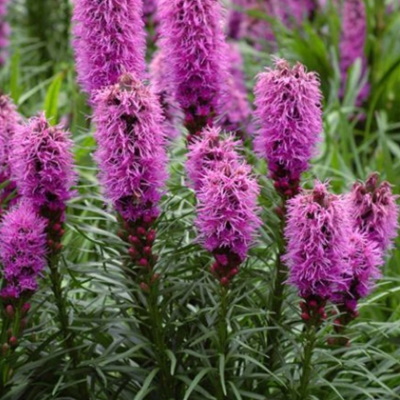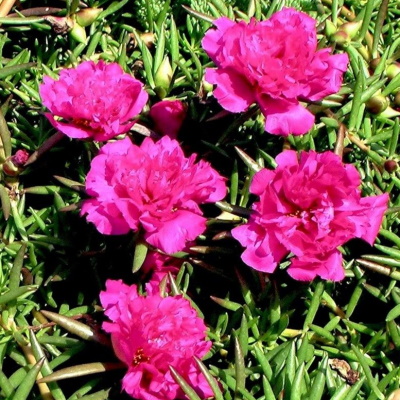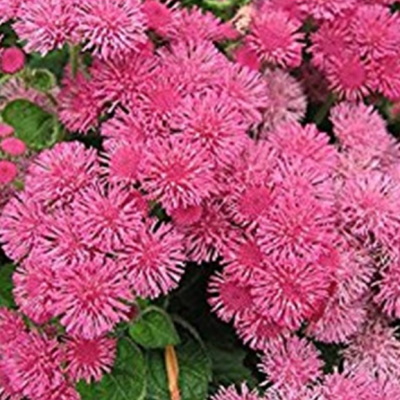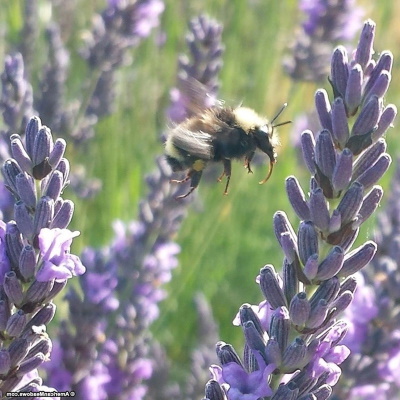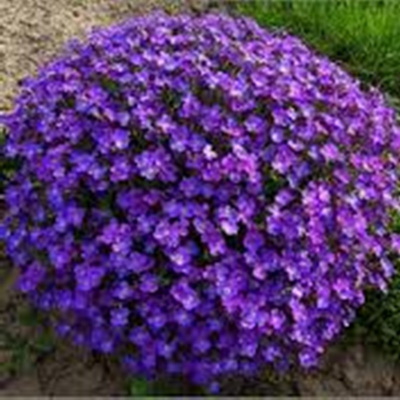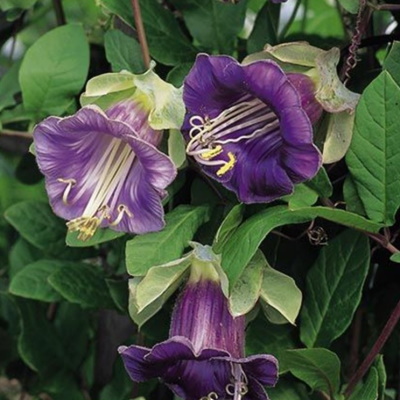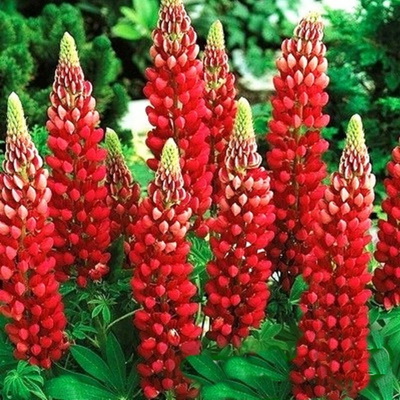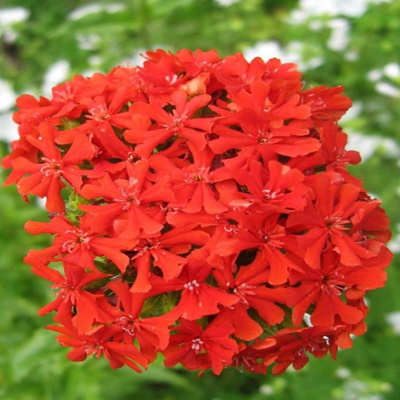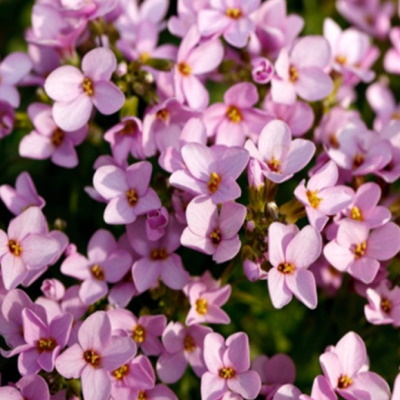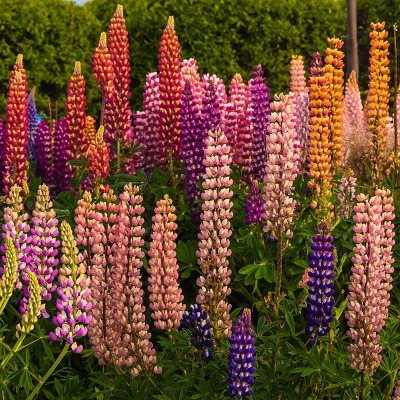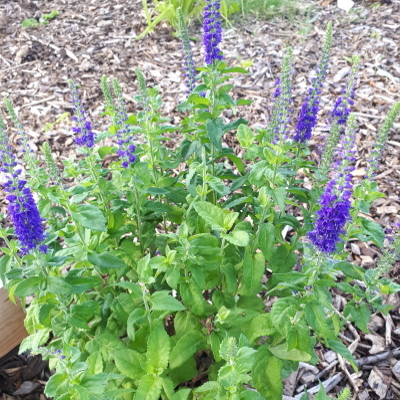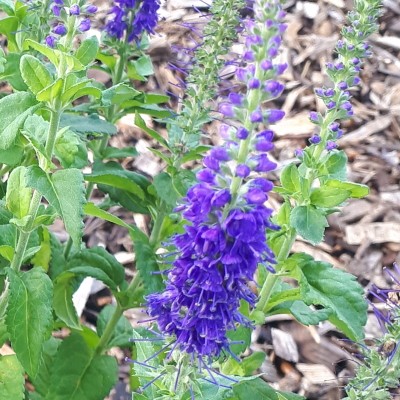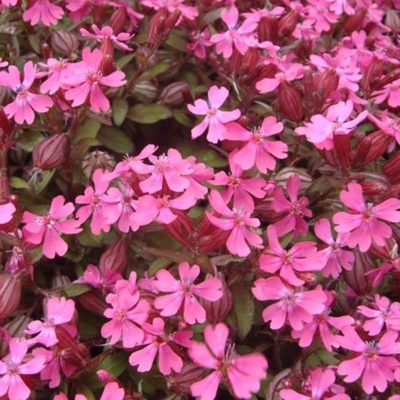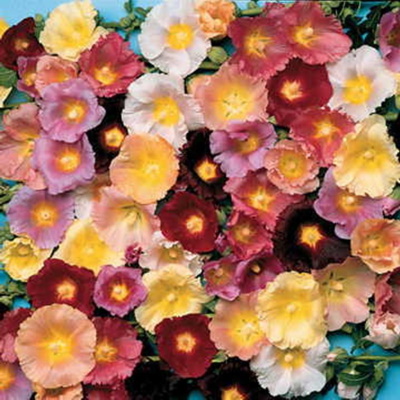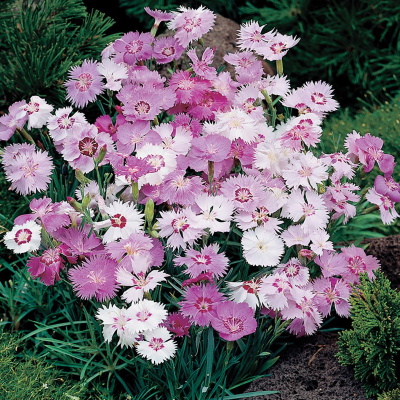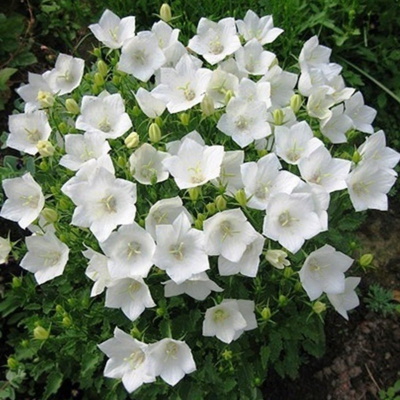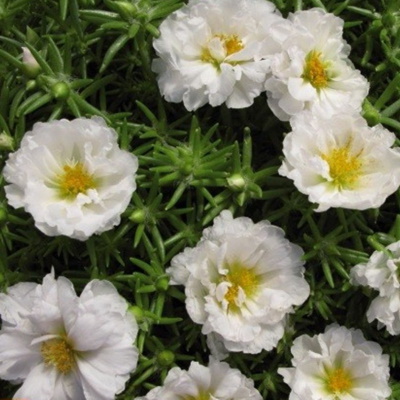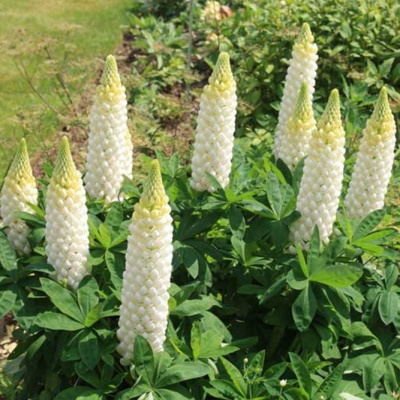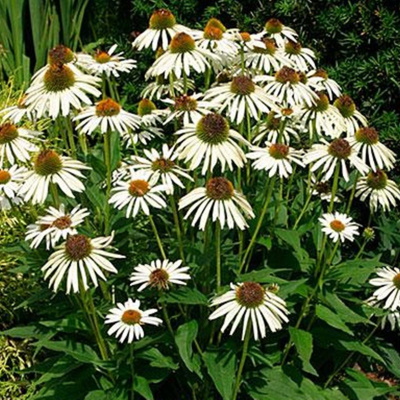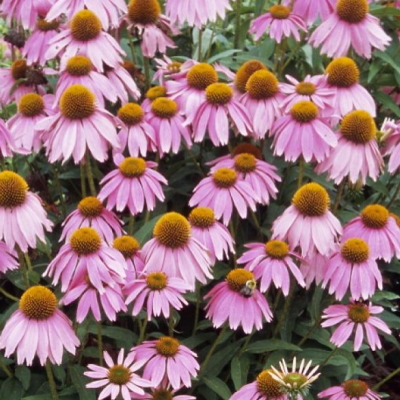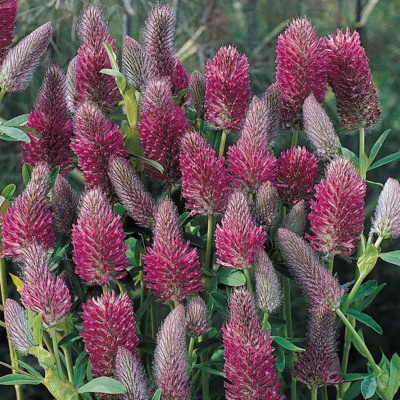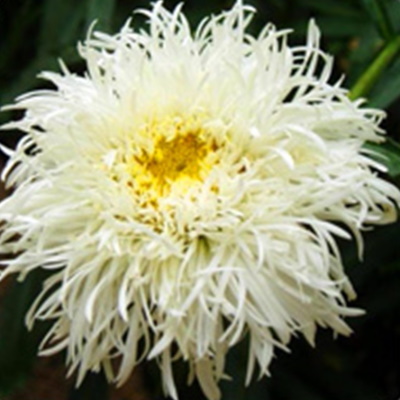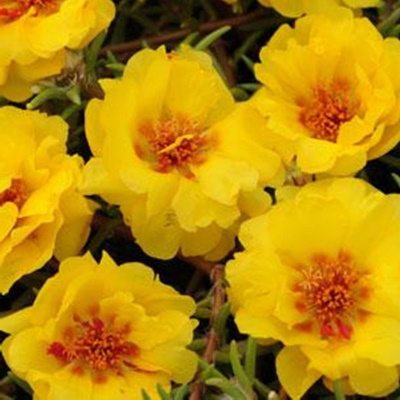-
-
-
-
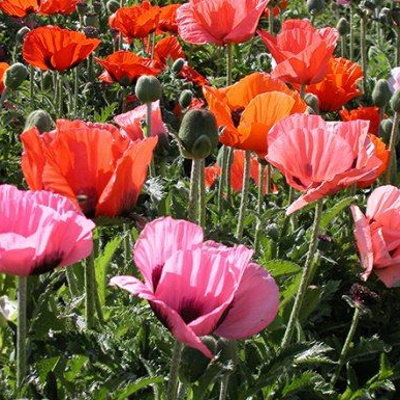 Perennial: Large 20 cm blooms in red, pink, mauve, salmon, white, and red with black centers. Expect up to twenty flowers per plant, followed by attractive seed pods from which seeds can easily be harvested. Pizzicato oriental poppy seeds are best direct sown in fall or mid-winter, and grow to a height of 50 cm. The flowers appear on stiff stems that stand up well in windy areas. This Oriental poppy mix blooms in June and July, after spring bulbs have faded, but before the arrival of summer flowers. After flowering, seed heads dry and the foliage fades away entirely, returning with autumn rains. This poppy is a good choice for xeriscaping, and it's deer resistant. Greenhouse: The seed requires darkness and a minimum 24 C soil temp. for proper germination. Since seedlings are hard to transplant, sow in peat pots and place them in a flat. Cover seed flat with black plastic or heavy paper. Seed germinates in about 10 days at 60 - 80%. Grow seedlings at 29 C days and l6°C - nights. Do not use cold water on seedlings. Cut all poppies in the bud, dip stems in boiling water for a few seconds to promote full bloom. Direct Sowing: Sow seed in July in warm soil. Do not try to transplant seedlings. Plants are quite hardy and bloom in early June next spring.
Perennial: Large 20 cm blooms in red, pink, mauve, salmon, white, and red with black centers. Expect up to twenty flowers per plant, followed by attractive seed pods from which seeds can easily be harvested. Pizzicato oriental poppy seeds are best direct sown in fall or mid-winter, and grow to a height of 50 cm. The flowers appear on stiff stems that stand up well in windy areas. This Oriental poppy mix blooms in June and July, after spring bulbs have faded, but before the arrival of summer flowers. After flowering, seed heads dry and the foliage fades away entirely, returning with autumn rains. This poppy is a good choice for xeriscaping, and it's deer resistant. Greenhouse: The seed requires darkness and a minimum 24 C soil temp. for proper germination. Since seedlings are hard to transplant, sow in peat pots and place them in a flat. Cover seed flat with black plastic or heavy paper. Seed germinates in about 10 days at 60 - 80%. Grow seedlings at 29 C days and l6°C - nights. Do not use cold water on seedlings. Cut all poppies in the bud, dip stems in boiling water for a few seconds to promote full bloom. Direct Sowing: Sow seed in July in warm soil. Do not try to transplant seedlings. Plants are quite hardy and bloom in early June next spring. -
-
Out of stock
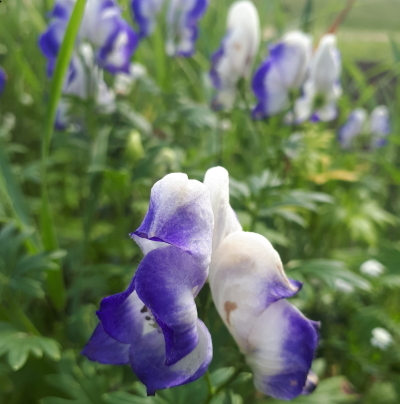 25 seeds per order. Purple Monkshood seeds 2020 harvest.
25 seeds per order. Purple Monkshood seeds 2020 harvest. -
-
-
Out of stock
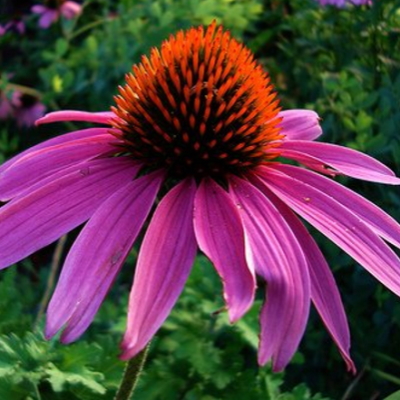 Purple coneflowers are found in many flower gardens. Purple coneflower (Echinacea purpurea) in the garden or flower bed draws bees and butterflies, ensuring that nearby plants have plenty of pollinators. The plant also provides a tall background or repeating rows of large (often 6 inches across) purple, daisy-like flowers. The sturdy stalks, which may reach 5 feet in height, rarely bend or require staking for an upright appearance. Coneflower plants may actually display pink flowers, when the cultivar Echinacea purpurea ‘Pink Double Delight’ is planted.
Purple coneflowers are found in many flower gardens. Purple coneflower (Echinacea purpurea) in the garden or flower bed draws bees and butterflies, ensuring that nearby plants have plenty of pollinators. The plant also provides a tall background or repeating rows of large (often 6 inches across) purple, daisy-like flowers. The sturdy stalks, which may reach 5 feet in height, rarely bend or require staking for an upright appearance. Coneflower plants may actually display pink flowers, when the cultivar Echinacea purpurea ‘Pink Double Delight’ is planted. -
Out of stock
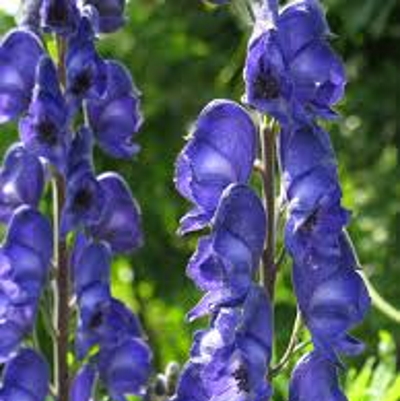 The monkshood plant is an herbaceous wildflower that can be found growing in mountain meadows throughout the northern hemisphere. The plant gets its name from the shape of the posterior sepal of the flowers, which resembles the cowls worn by monks. Also known as wolfsbane and Aconitum, monkshood has become popular as a garden addition because of its purple/blue flowers and attractive foliage. Growing 2 to 4 feet (0.5 to 1 m.) tall and 1 to 2 feet (0.5 m.) wide, perennial monkshood is best grown as a background plant. The leaves of the monkshood plant are palmate, meaning hand-shaped, with lobed “fingers” that often have toothed edges and vary in color from light to dark green. In late summer or early fall, it sends up showy spires of purple/blue flowers. Monkshead is not invasive and is both deer and rabbit resistant. However, monkshood, or wolfsbane, is moderately difficult to grow and once planted, doesn’t like to be moved so the best way to grow monkshood is to choose your spot carefully. It sometimes takes a while for it to become established.
The monkshood plant is an herbaceous wildflower that can be found growing in mountain meadows throughout the northern hemisphere. The plant gets its name from the shape of the posterior sepal of the flowers, which resembles the cowls worn by monks. Also known as wolfsbane and Aconitum, monkshood has become popular as a garden addition because of its purple/blue flowers and attractive foliage. Growing 2 to 4 feet (0.5 to 1 m.) tall and 1 to 2 feet (0.5 m.) wide, perennial monkshood is best grown as a background plant. The leaves of the monkshood plant are palmate, meaning hand-shaped, with lobed “fingers” that often have toothed edges and vary in color from light to dark green. In late summer or early fall, it sends up showy spires of purple/blue flowers. Monkshead is not invasive and is both deer and rabbit resistant. However, monkshood, or wolfsbane, is moderately difficult to grow and once planted, doesn’t like to be moved so the best way to grow monkshood is to choose your spot carefully. It sometimes takes a while for it to become established. -
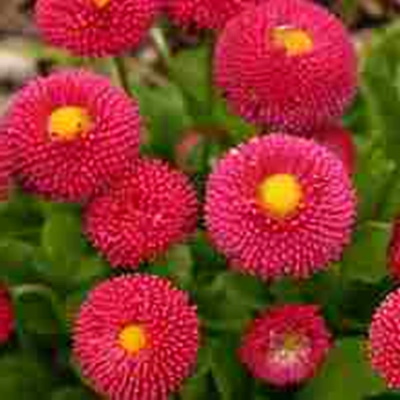
A perennial plant, grown as a biennial, 10-20 cm in height. Inflorescences with a diameter of 2-6 cm, raspberry-red color. Sow seeds for seedlings in May-June, transplanted to a permanent place in the fall. Abundant and friendly flowering of daisies occurs next year from May to August. It grows well in sunny places and in partial shade. Used for decoration of balconies, terraces, flower beds, and lawns.
-
-
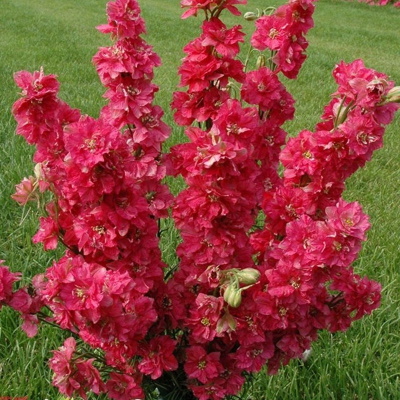 An annual plant, 80-120 cm in height. Flowers of red color, 2-3 cm in diameter. They are grown by sowing seeds in open ground in May or towards winter, seeds are sown for seedlings in March. It grows better in areas protected from the wind. Blooms profusely, from June to September. Used in mixed flower beds, group plantings, and for cutting.
An annual plant, 80-120 cm in height. Flowers of red color, 2-3 cm in diameter. They are grown by sowing seeds in open ground in May or towards winter, seeds are sown for seedlings in March. It grows better in areas protected from the wind. Blooms profusely, from June to September. Used in mixed flower beds, group plantings, and for cutting. -
-
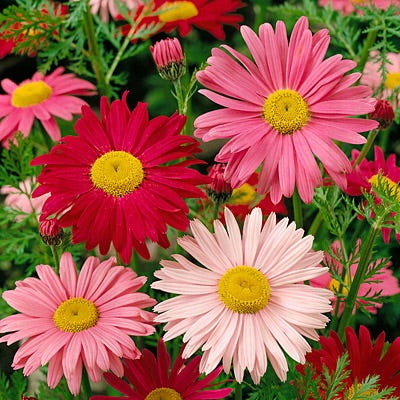 Perennial, grows 90 cm tall. Large, white, hot pink, bright fuchsia, and scarlet hich grow diameter 6-9 cm. Grows in full sun or partial shade. Blooms in the second year from June to September. Use for group plantings, borders, and cutting. In general, daisies are grown for masses of reliable blooms in late summer and autumn. Do not cover seeds; seeds germinate in 7 to 28 days. Pinch tips for bushier plants. Chrysanthemums have a confusing classification system, and the Latin names have changed over time.
Perennial, grows 90 cm tall. Large, white, hot pink, bright fuchsia, and scarlet hich grow diameter 6-9 cm. Grows in full sun or partial shade. Blooms in the second year from June to September. Use for group plantings, borders, and cutting. In general, daisies are grown for masses of reliable blooms in late summer and autumn. Do not cover seeds; seeds germinate in 7 to 28 days. Pinch tips for bushier plants. Chrysanthemums have a confusing classification system, and the Latin names have changed over time. -
-
-
-
Out of stock
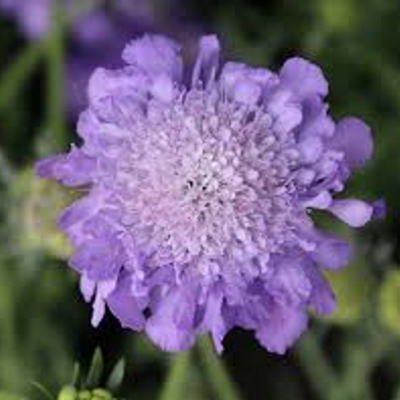
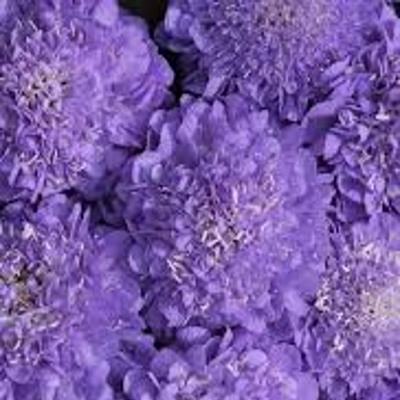
a.k.a Pincushion Flower
Elegant and uniform cut flower.
Matures in 90-100 days Package contains: 50 Seeds1 1/2–2 1/2", lavender-blue flowers stand tall on strong, slender stems. A dramatic addition to any bouquet or garden. Also known as mourning bride -
-

A perennial plant 10-20 cm in height. Flowers are 2-6 cm and have multi-layered snow-white petals with a bright yellow button centre. Sow seeds for seedlings in May-June, transplanted to a permanent place in the fall. Abundant and friendly flowering of daisies occurs next year from May to August. It grows well in sunny places and in partial shade. Used for decoration of balconies, terraces, flower beds, and lawns.
-
Out of stock
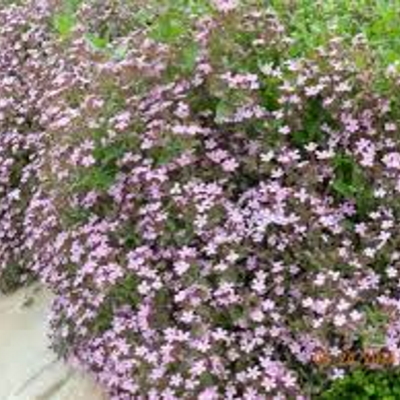
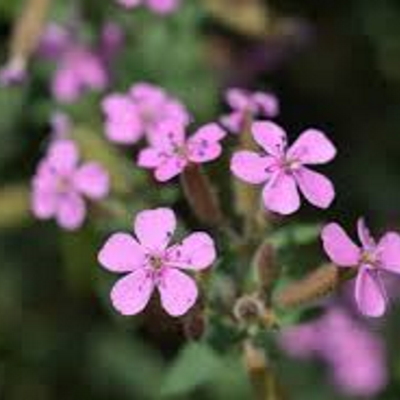 Soapwort is a favourite perennial for cool-alpine and rock gardens. This semi-evergreen blooms from May to August with five-petaled pink flowers joined at the base to form a nectar tube that is highly attractive to bees. Provide good drainage. The roots really can be used to make soap. Rock Soapwort looks marvelous in containers, but best in situations when it can trail and seed itself. Sturdy and easy to grow. Stems are thicker, stronger, taller, and easier to manage than those of annual gypsophila, an otherwise similar flower. 3/4 to 1" dusty pink blooms float above gray-blue, waxy foliage. Branching plant habit. Also known as cow soapwort.
Soapwort is a favourite perennial for cool-alpine and rock gardens. This semi-evergreen blooms from May to August with five-petaled pink flowers joined at the base to form a nectar tube that is highly attractive to bees. Provide good drainage. The roots really can be used to make soap. Rock Soapwort looks marvelous in containers, but best in situations when it can trail and seed itself. Sturdy and easy to grow. Stems are thicker, stronger, taller, and easier to manage than those of annual gypsophila, an otherwise similar flower. 3/4 to 1" dusty pink blooms float above gray-blue, waxy foliage. Branching plant habit. Also known as cow soapwort. -
-
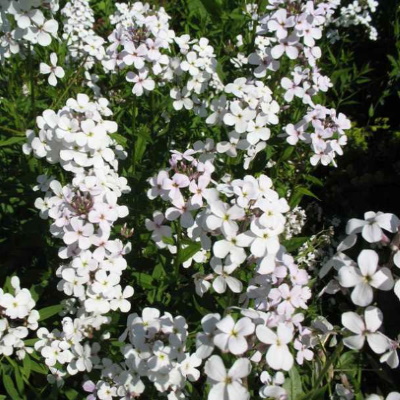 Perennial flowering plant grows up to 60-90 cm in height. Small, white flowers with a diameter of 1.5-2 cm. During flowering, the plant has a strong and pleasant aroma, especially in cloudy weather or evening hours. Grows well in full sun and partial shade. Use for group plantings, flowerbeds as well as cuttings.
Perennial flowering plant grows up to 60-90 cm in height. Small, white flowers with a diameter of 1.5-2 cm. During flowering, the plant has a strong and pleasant aroma, especially in cloudy weather or evening hours. Grows well in full sun and partial shade. Use for group plantings, flowerbeds as well as cuttings. -
-
-
Out of stock
 Perennial flowering plant with erect, robust stems, height 50-70 cm Small, fluffy flowers, white colour. Suitable for growing in group plantings, flower beds.
Perennial flowering plant with erect, robust stems, height 50-70 cm Small, fluffy flowers, white colour. Suitable for growing in group plantings, flower beds. -
Out of stock
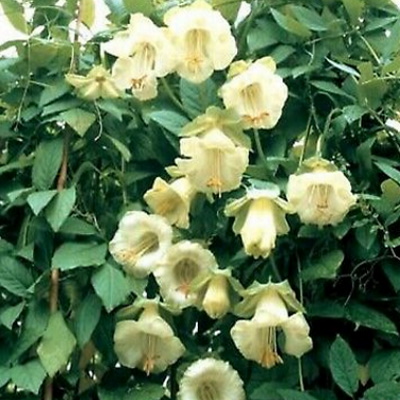 Tender tropical perennial vine is grown as an annual with showy flowers and loves the sun. To propagate file the seeds to speed germination. Adding excess fertilizer will promote foliage at the expense of flowers. It prefers moist, well-drained soil. Works well in vertical spaces but needs a fence, arbor, or trellis to climb.
Tender tropical perennial vine is grown as an annual with showy flowers and loves the sun. To propagate file the seeds to speed germination. Adding excess fertilizer will promote foliage at the expense of flowers. It prefers moist, well-drained soil. Works well in vertical spaces but needs a fence, arbor, or trellis to climb. -
Out of stock
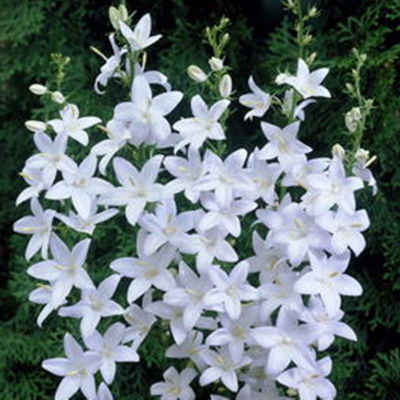 Perennial flowering plant grows 100-150cm (40-60in.) tall. Pearl-white flowers collected in pyramidal shape on the peduncle. Blooms in the second year from June to July. Use for group plantings, borders and cutting, looks very impressive in flower bouquets.
Perennial flowering plant grows 100-150cm (40-60in.) tall. Pearl-white flowers collected in pyramidal shape on the peduncle. Blooms in the second year from June to July. Use for group plantings, borders and cutting, looks very impressive in flower bouquets. -
-
-
-
-
-
-
Out of stock
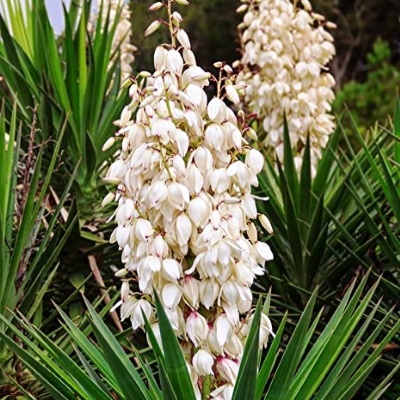 Easily grown in light, dry to medium, well-drained soils in full sun. Tolerant of poor, sandy soils, heat, drought, and salt spray. Surprising tolerance for some part shade. Can be propagated easily from basal offsets.
Easily grown in light, dry to medium, well-drained soils in full sun. Tolerant of poor, sandy soils, heat, drought, and salt spray. Surprising tolerance for some part shade. Can be propagated easily from basal offsets.Noteworthy Characteristics
Yucca filamentosa, commonly called Adam’s needle, Spanish bayonet, yucca and needle palm, is a virtually stemless broadleaf evergreen shrub (though it looks more like a perennial than a shrub) that is native to beaches, sand dunes and fields from South Carolina south to Florida and Mississippi. It has escaped cultivation and extended its original range north into New England. It features a basal rosette of rigid, sword-shaped, spine-tipped green leaves (to 30” long and to 4” wide) with long filamentous (as per specific epithet) curly threads along the margins. Leaves form a foliage clump to 2-3’ tall. In late spring, a flowering stalk rises from the center of each rosette, typically to 5-8’ tall, but infrequently to 12’ tall, bearing a long terminal panicles of nodding bell-shaped creamy white flowers. Fruits are elliptical dehiscent capsules. Will form a small colony over time from basal offsets. Genus name comes from the Carbi name for manihot, also called cassava or yuca, which is not closely related but has similarly enlarged root structures. Specific epithet means with filaments or threads.
